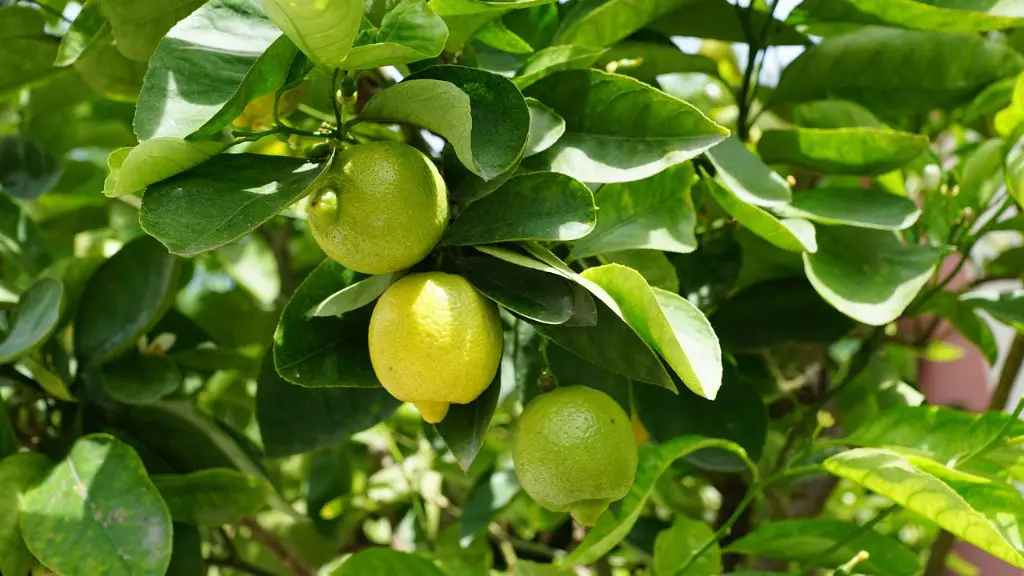Avocado trees are a popular and delicious addition to many people’s gardens, but they require regular maintenance. One important maintenance task is pruning, which helps promote healthy fat and juicy avocados, while making sure the tree doesn’t succumb to disease or pests. If you want to optimize your avocado production, the key question is: When is the best time to trim your avocado tree?
The general consensus from experts is that the best time to prune your avocado tree is in the early spring, before the growing season begins. Pruning your tree early in the season encourages new growth and reduces the risk of diseases that can develop as the weather warms up. Additionally, pruning during the cooler months makes it easier to spot dead or damaged branches, and can help the tree develop a healthier tree structure.
However, early spring isn’t the only time when pruning your avocado tree can be beneficial. Despite the reduced risk of disease, some experts recommend waiting until late summer to prune your avocado tree. This is because pruning in the summer stimulates more vigorous growth during the summer months, resulting in higher yields. Additionally, pruning during the summer allows you to better control the size and shape of your avocado tree, which can lead to healthier and more aesthetically pleasing results.
It’s important to keep in mind that the best time to prune your avocado tree could depend on the region in which you live. For example, if you live in a region with a cool summer climate, pruning in the late spring or early summer may be more beneficial than pruning in the late summer. Additionally, the type of avocado tree you have can also impact when you should prune it. For example, some avocado trees are more prone to disease in the early summer and should be pruned later in the season than other varieties.
The best way to determine when to prune your avocado tree is to talk to a local expert. They’ll be able to provide advice based on the particular location and conditions of your tree, as well as the type of tree it is. Additionally, they can help you identify when your tree should be pruned and the best way to go about it.
Pruning Techniques
Once you’ve determined when to prune your avocado tree, the next step is to learn the different pruning techniques. The most common technique is selective pruning, which involves removing dead or diseased branches, as well as branches that are crossing over each other or growing in an unnatural direction. Additionally, selective pruning can help encourage a tree to develop a specific shape, such as a “V” or “U” shape.
Another popular pruning technique is thinning, which involves removing entire branches rather than individual branches. Thinning encourages more sunlight and air circulation, as well as increased branching, which can be beneficial for growth and yields. Additionally, thinning is helpful for keeping a tree’s size and shape in check, as well as reducing the risk of disease.
Finally, another technique is topping, which involves cutting off the tops of branches to encourage more side branching. Topping can be beneficial for controlling the size and shape of a tree and for increasing yields, but it should be done judiciously and only when needed.
Tools and Safety
When it comes to pruning your avocado tree, the right tools can make all the difference. Good shears are a must, and pruning saws can also be useful for larger branches. Additionally, other items like gloves and protective eyewear can help protect you while you’re working.
It’s also important to keep safety in mind when pruning your avocado tree. Make sure to wear the right protective gear and avoid any risky techniques, such as climbing or using ladders. Additionally, be mindful of the size and type of branches you’re dealing with, as well as the weight of the fruit. Pruning heavy or large branches can be dangerous and should be avoided.
Effect of Pruning on Avocado Production
Regular pruning has a number of benefits for your avocado tree and its yields. Pruning improves air circulation, which can reduce the risk of disease and pest infestations. Additionally, pruning can help encourage more and larger fruits, as well as a higher rate of production. Finally, pruning can help improve the structure of the tree, which can lead to a more aesthetically pleasing appearance.
That said, pruning isn’t a one-size-fits-all solution. Over-pruning can stress the tree, leading to reduced yields, as well as pests and diseases. Additionally, pruning too late in the season can cause the tree to put all its energy into new growth instead of producing fruit.
Furthermore, some trees may not require pruning at all. If your tree has a naturally healthy structure or is a dwarf variety, pruning may not be necessary or beneficial. Additionally, pruning a young tree can cause it to grow in an unnatural shape.
Fertilizing After Pruning
One important final step after pruning your avocado tree is fertilizing. Fertilizing helps the tree recover from the stress of pruning and encourages healthy new growth. For best results, use a fertilizer specifically designed for avocado trees.
Additionally, the timing of fertilizing is just as important as the fertilizer itself. For optimal results, fertilize your avocado tree immediately after pruning and again after the new growth has settled. This will help ensure your tree stays healthy and produces a high yield of delicious avocados.
Signs of Stress After Pruning
Although pruning helps encourage healthy growth, it can also lead to some stress for the tree. Signs that your tree is stressed include yellow or browning leaves and an overall lack of foliage. Additionally, your tree may appear wilted or stunted, and dry or cracked branches may be present.
If your tree shows any signs of stress after pruning, it’s important to take steps to help it recover. Make sure your tree is getting enough water, and consider using a fertilizer designed for avocado trees to help it bounce back. Additionally, it’s important to monitor your tree closely and take steps to address any pest or disease problems that may arise.
Conclusion
Overall, pruning is an important part of caring for your avocado tree. To optimize your yields and keep your tree healthy, it’s important to prune the tree at the ideal time and with the right techniques. Additionally, it’s important to monitor the tree for signs of stress and to fertilize it after pruning. With the right approach and attention, your avocado tree will have a long and productive life.


